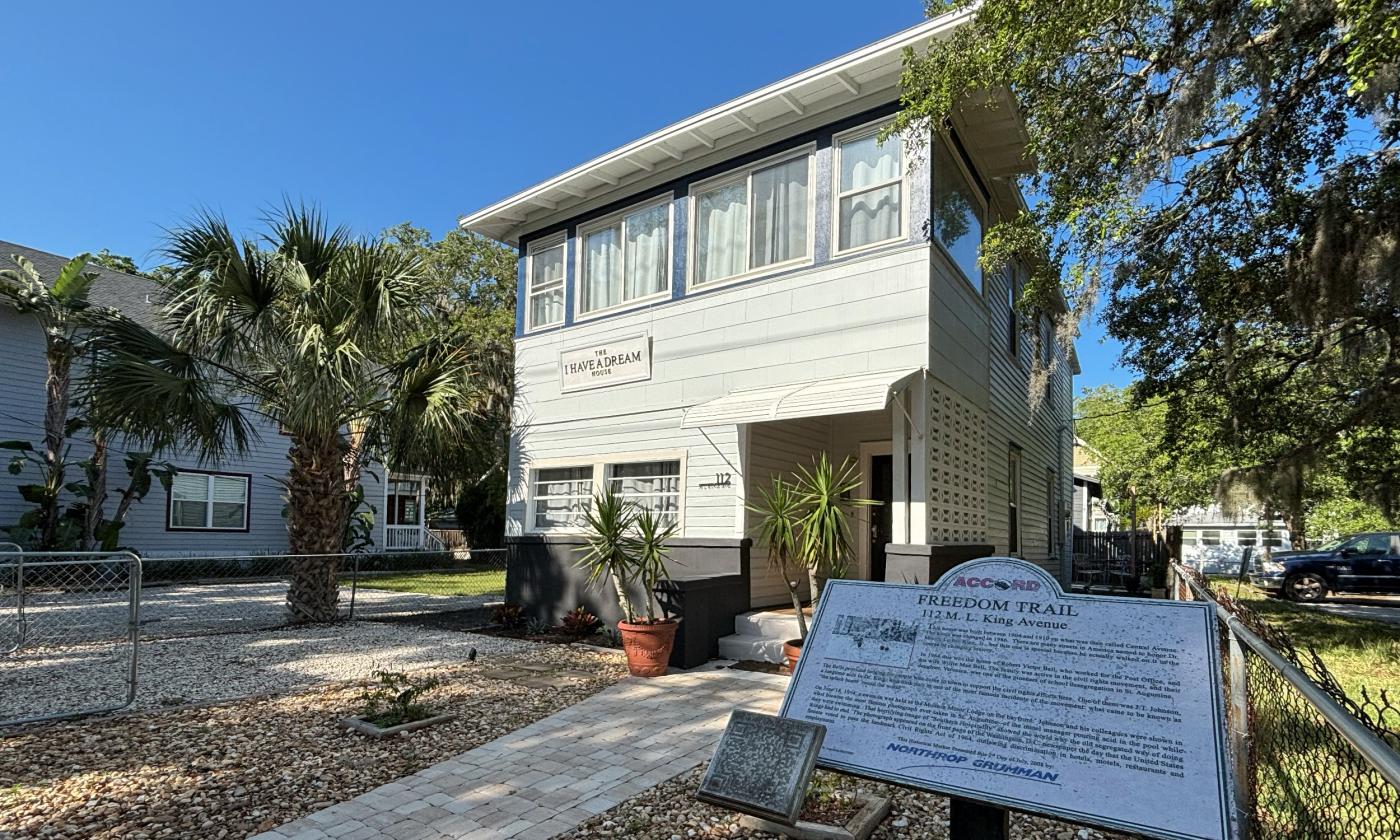112 M. L. King Avenue
112 M. L. King Avenue
The Bell Family
Mr. Robert Victor Bell (1925-1984) and Mrs. Willie Mae Bell (1930-1997) lived at 112 Martin Luther King Avenue when the street was still named Central Avenue.
According to his gravestone at St. Augustine's Craig Memorial Park, Robert was a Corporal in the U.S. Army during World War II. He worked at the post office in St. Augustine.
The Bells all supported their community during the St. Augustine Civil Rights Movement (1951-1968). Their daughter, Veronica Bell Johnson, is also recognized as a pioneer of desegregation in St. Johns County.
St. Augustine Civil Rights Movement (1951-1968)
The events of the St. Augustine Movement are recognized as being pivotal to the passing of the 1964 Civil Rights Act.
By the spring of 1964, the efforts of local Black citizens to secure their civil rights had been ongoing in St. Augustine for over a decade. But that year, summons by local activists led to a collaboration with Dr. Martin Luther King Jr.'s Southern Christian Leadership Conference (SCLC).
Dr. King's presence here earned national attention, attracting droves of American activists to join the demonstrations — from college students to rabbis to New England socialites.
These “out-of-towners” often lodged in the homes of local activists, like the Bells here at 112 M.L.K. Ave.
John “J.T.” Johnson & the Monson Motor Lodge
One of the visiting activists who stayed here was J.T. Johnson, the young Project Director of the SCLC. In his mid-20s at the time, Johnson had been organizing with Dr. King, Andrew Young, and Hosea Williams for about a year when the SCLC came to St. Augustine in March 1964.
On June 18 1964 — during his time staying at 112 M.L.K. Ave — J.T. Johnson helped to organize the infamous “swim-in” at the Monson Motor Lodge (now the Hilton Bayfront). Protesting the hotel’s White-only policy, an integrated group of protestors (Johnson among them) jumped into the pool.
The hotel’s manager, James Brock, retaliated by pouring acid into the pool. The Freedom Trail marker here says it best:
“That horrifying image of ‘Southern Hospitality’ showed the world why the old segregated way of doing things had to end.”
Following the Civil Rights Movement, J.T. Johnson has continued his social activism in the state of Georgia through youth mentorship and oration. He heads the Take2America Foundation.
Naming of M. L. King Avenue
112 M.L.K. Avenue was built between 1904 and 1910, when the street was still named "Central Avenue."
In the mid-1980s, the name of Central Avenue was changed to to honor Dr. Martin Luther King Jr.
While this naming practice was common all over the country, this street in St. Augustine is unique. Dr. King actually marched on Central Avenue, as well as stayed in a few homes on the street during the spring and summer of 1964.
Visiting the ACCORD Freedom Trail
Launched in 2007, the ACCORD Freedom Trail pays tribute to the activists and leaders (or "heroes and sheroes") of the St. Augustine Civil Rights Movement. The ACCORD Civil Rights Museum is the central location on the Freedom Trail.
Visit the ACCORD Freedom Trail Website to learn more.
Resources
Online Resources
112 M.L.K. Avenue plaque, from the Historical Marker database.
Robert Victor Bell Memorial, Find A Grave.
“Impact of an Image: Protestors Threatened With Acid,” J.T. Johnson interview from Voices of the Civil Rights Movement, NBC Universal.
“J.T. Johnson and Al Lingo,” 2014 oral history interview from Story Corps.
“Atlanta City Council Member Andrea L. Boone to Honor Civil Rights Legend John ‘J.T.’ Johnson,” 2023 media advisory from Atlanta City Hall.
Further Reading
The Dark Before Dawn: From Civil Wrongs to Civil Light, by Gerald Eubanks, 2012.
St. Augustine, Florida, 1963-1964: Mass Protest and Racial Violence, edited by David Garrow, 1989.


